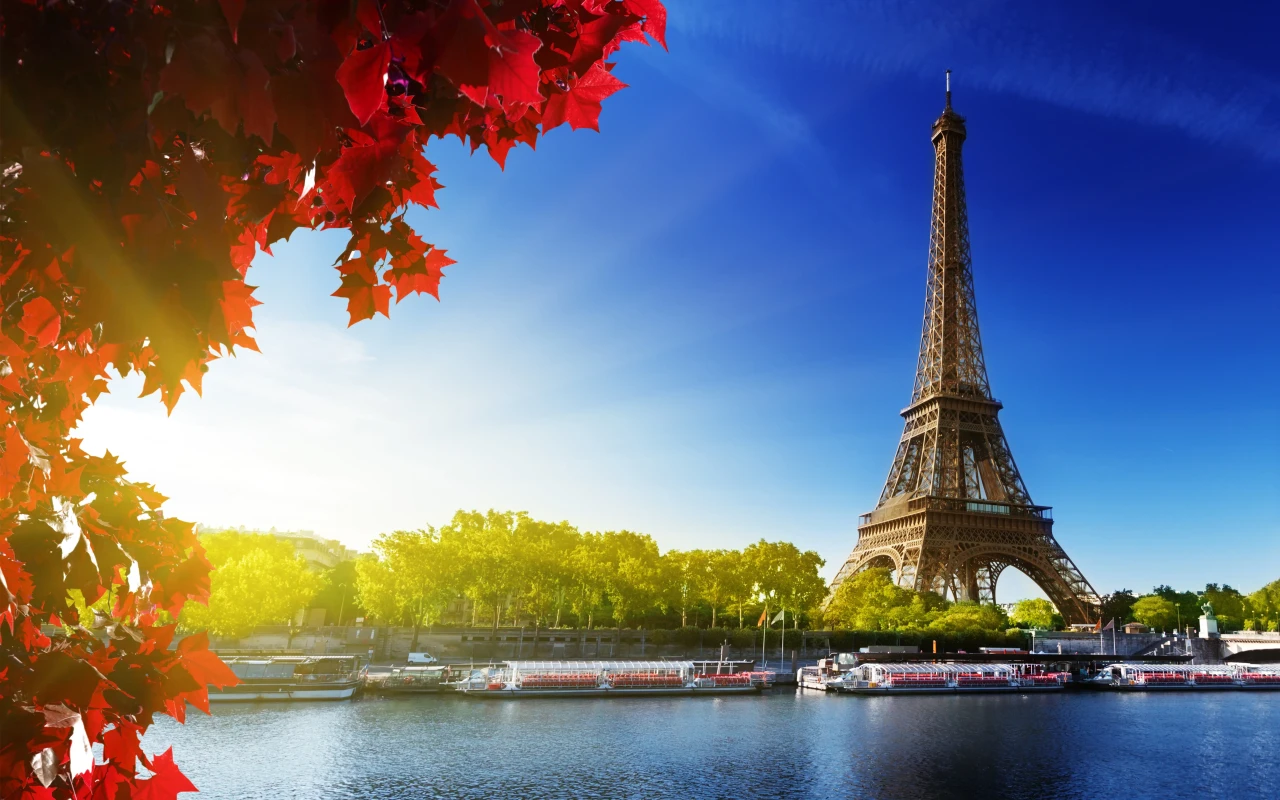Museums & Galleries
Landmarks & Heritage
Entertainment & Lifestyle
Nature & Outdoors
Landmarks and Monuments
1. Visit The Eiffel Tower
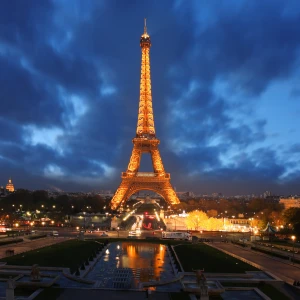
Known worldwide as the "City of Love," Paris, France, offers an astounding richness of history, culture, fashion, gastronomy, and most notably, breathtaking sights. Standing proudly and dominating the Parisian skyline is La Tour Eiffel (the Eiffel Tower). It's well-loved globally as the symbol of France, making it an absolute must-see for any world traveler.
The Eiffel Tower, an incredible display of structural iron palpability, is a 330-meter tall tower crafted predominantly from iron. It is located at Champ de Mars in the 7th arrondissement, nearby the Seine river. Since its official opening on March 31, 1889, it has welcomed over ...
2. Stroll Along The Champs-Élysées
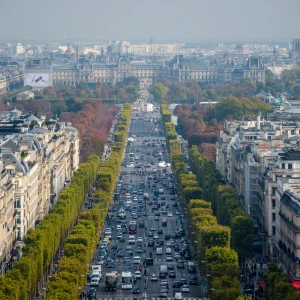
An experience of a lifetime, a walk down the iconic Champs-Élysées is not merely a casual stroll but rather an invitation to envelop oneself in the tapestry of French history and culture. Extending almost two kilometers and lined with trees on both sides, this celebrated promenade embodies the très chic spirit of Paris, making it more than just a miracle of urban design.
Commence your delightful wanderlust at the Place de la Concorde, where the Champs-Élysées originates. The elegant square is steeped in history; it was here, you'll recall, where the infamous guillotine claimed several lives during the French Revolution. ...
3. Visit The Palace Of Versailles
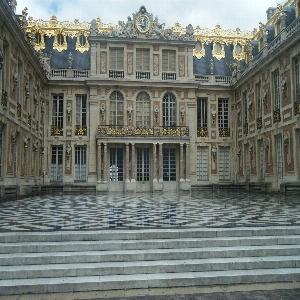
Embarking on a journey to the Palace of Versailles is like stepping back in time, becoming lost in a world of grandeur that embodies the opulence of France's royal past. Nestled in the illustrious city of Versailles, just a short ride from Paris, this UNESCO World Heritage site offers a glimpse into the lives of the French monarchy, specifically Louis XIV, Louis XV, and Louis XVI who reigned amidst its exuberant grandeur.
Upon arrival, visitors are immediately struck with the Palace's majestic façade that stretches to almost 4000 feet wide. Adorned with inviting French Baroque architecture, your gaze falls upon ...
4. Explore The Place De La Concorde
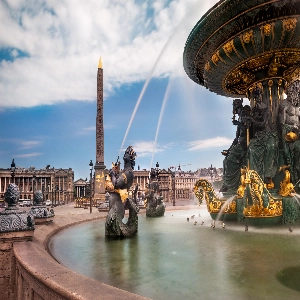
The heart of Paris, a pulsating hub that captures the essence of French history and grandeur, pulsates vividly at Place de la Concorde. As the largest square in the French capital, this monumental area is not merely a crossing for the city's myriad pathways; it is a treasure trove of insights, a canvas of historical intrigue, and a testament to the elegance of Parisian urban planning. Whether you're a seasoned traveler or a novice explorer, delving into the depths of Place de la Concorde offers a unique blend of historical narratives and architectural majesty, tying together the past and present ...
5. Discover The Place Des Vosges
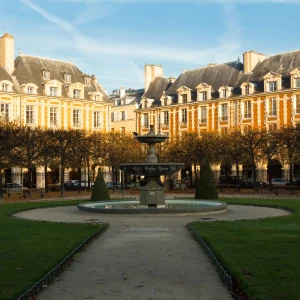
Nestled in the heart of Paris' historic Marais district, the Place des Vosges stands as a testament to the city's rich cultural heritage and architectural grandeur. This remarkable square, notable for its perfect symmetry and uniformity, encapsulates the essence of Parisian elegance from the early 17th century. Originally known as the Place Royale, its construction was ordered by King Henri IV and completed in 1612, making it the oldest planned square in Paris. Today, the Place des Vosges remains a cherished location for both Parisians and visitors, offering a peaceful retreat from the bustling city streets, surrounded by an impressive ...
6. Explore The Musée Grévin
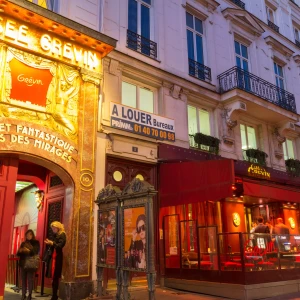
Venture into the heart of Paris, and you'll find an attraction that combines history, art, and entertainment in an extraordinary manner—the Musée Grévin. Opened in 1882, this wax museum houses a dazzling array of figures, ranging from historical icons to contemporary celebrities, all crafted with astonishing attention to detail. For travelers looking to immerse themselves in a unique blend of culture and whimsy, the Musée Grévin offers a captivating experience that transcends the ordinary museum visit.
The journey through the Musée Grévin is akin to a walk through time, where each corner turned reveals another period or personality brought back ...
Museums and Art Galleries
7. The Louvre Museum: Masterpieces, History, And Timeless Art In The Heart Of Paris
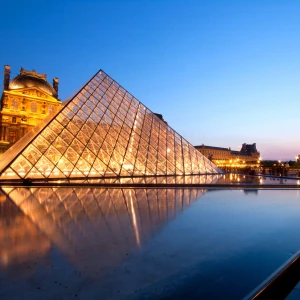
When one thinks of Paris, it's impossible not to imagine the iconic Louvre Museum (Musée du Louvre). Known worldwide for its stunning glass pyramid entrance and impressive art collection, this former royal palace has a rich history that spans over 800 years. Established in 1793, the museum attracts millions of art enthusiasts annually who come to admire some of the world's most famous masterpieces such as the Mona Lisa, the Winged Victory of Samothrace, and the Venus de Milo.
Sprawling across an area of 652,300 square feet, the Louvre Museum is the world's largest art museum, housing more than 380,000 ...
8. Visit The Grand Palais
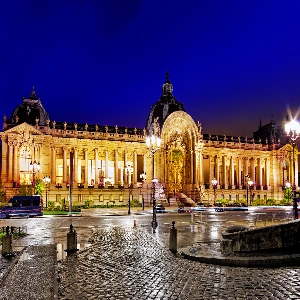
Paris, the city of light, is home to some of the world's most iconic monuments and museums. Among these, the Grand Palais stands out as a testimony to the city's rich cultural and architectural heritage. Built for the Universal Exposition of 1900, it is a magnificent structure that has survived the test of time, offering visitors an unparalleled experience of art, history, and architecture. The Grand Palais is not just a museum; it is a living piece of history that continues to captivate the imagination of those who walk through its expansive doors.
The Grand Palais is renowned for its ...
9. Visit The Palais De Tokyo
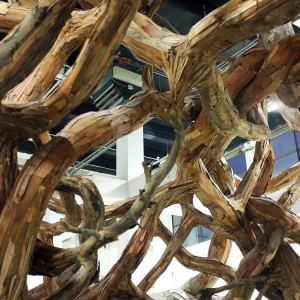
Perched on the edge of the 16th arrondissement in Paris, overlooking the river Seine, the Palais de Tokyo stands as a pilgrimage site for those who seek the avant-garde and the splendour of modern art. This cultural edifice is not merely a museum but a vast canvas of contemporary creativity, offering an immersive experience into the latest movements in art and expression. The Palais de Tokyo, skirting the traditional, invites its visitors to embark on a journey through the evolving landscapes of the contemporary art world, setting itself apart as a leading beacon of artistic innovation.
The building itself, with ...
10. Visit The Musée D'Orsay
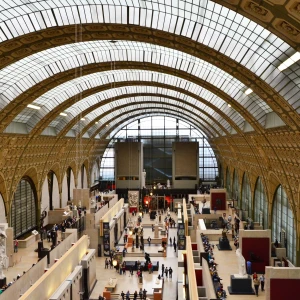
When you are traveling to the irresistible city of lights and love, Paris, paying a visit to the renowned Musée d'Orsay is a must. A former train station, it has over time metamorphosed into a manifestation of beauty and art, rivalling even the famed Louvre with its grandeur and collection. As you cross the threshold, be prepared for a sensational journey through the history of art, primarily emphasizing the enchanting world of French and European art from the mid-19th to early 20th centuries.
Imagine stepping into a world designed to resemble the interior of a jewel box, where each 'gem' ...
11. Explore The Centre Pompidou
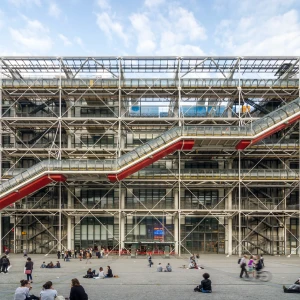
A visit to the Centre Pompidou is a journey into the world of contemporary and modern art. Known for its high-tech architecture, including its exposed colorful tubing and structural elements, the Centre Pompidou stands out in the Parisian landscape. Inside, visitors find an extensive collection of modern art, a public library, and a rooftop terrace with stunning views of Paris. This cultural hub is not just about art; it's a symbol of innovative urban design and a hotspot for creative minds.
12. Explore The Rodin Museum

Situated in the heart of Paris, the Rodin Museum is a testament to the masterful works of the acclaimed French sculptor, Auguste Rodin. Enclosed within a charming 18th-century mansion called the Hôtel Biron, the museum provides an insightful journey into the life and artistry of Rodin. The museum is home to an extensive collection of over 6,000 sculptures, in addition to other pieces of artwork, making it a must-visit for art enthusiasts.
As you step into the Rodin Museum, you instantly become immersed in Rodin's creative universe. His iconic works, such as "The Thinker", "The Gates of Hell", and "The ...
13. Visit The Picasso Museum
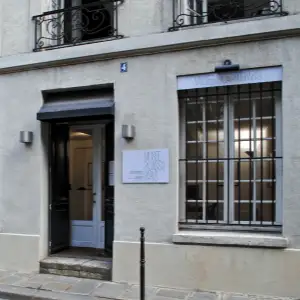
Immersing oneself in the chaotic yet harmoniously brilliant world of Pablo Picasso is an exceptional journey, one that can be wholly experienced at the Museu Picasso. Nestled within the labyrinthine alleys of Barcelona's hip El Born district, this tribute to one of the most influential artists of the 20th century is a sensory voyage into the depths of modern art.
The Museu Picasso, established in 1963, boasts one of the most extensive collections of Picasso's artworks, encapsulating an astounding 4,251 pieces. The museum primarily focuses on Pablo Picasso's formative years - his Blue Period, Rose Period, and elements of his ...
14. Discover The Orsay Museum

Nestled on the bustling left bank of the Seine in Paris, the Orsay Museum stands as a grand testament to the evolutionary journey of art from the mid-19th century to the dawn of the modern age. Housed in the former Gare d'Orsay, a Beaux-Arts railway station built for the 1900 World Fair, the museum is as much a masterpiece in its architectural splendor as it is a home to the world's most prominent collection of Impressionist and post-Impressionist masterpieces. From Monet to Van Gogh, the Orsay Museum offers an unrivaled voyage through the dazzling creativity and turbulent changes of the ...
15. Discover The Petit Palais

Nestled in the heart of Paris, a stone's throw from the Champs-Élysées, the Petit Palais stands as a monument to the glory of French art and architecture. Designed by architect Charles Girault for the Universal Exposition of 1900, this petite yet grandiose palace has since been an emblem of France's cultural magnificence. It is an architectural marvel that seamlessly blends the grandeur of the Beaux-Arts style with the intricate details of Art Nouveau, inviting visitors to step into a world where art and history converge in the most splendid fashion.
As you cross the threshold of the Petit Palais, you ...
16. Explore The Palais Garnier
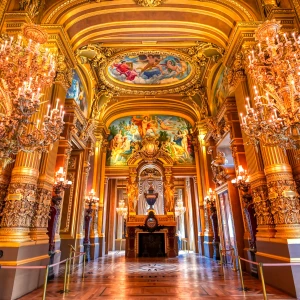
Nestled in the bustling heart of Paris, the Palais Garnier stands as an emblem of the opulence and grandeur that defined the Second Empire in France. This architectural marvel, designed by Charles Garnier and inaugurated in 1875, invites travelers from around the globe to explore its lavish interiors and fascinating history. Beyond its role as a premier opera house, the Palais Garnier is a testament to the artistic and cultural richness that has perennially coursed through the veins of Paris.
The grand façade of the Palais Garnier sets the stage for its awe-inspiring interior, adorned with an abundance of marble, ...
17. Explore Musée Rodin: A Sanctuary Of Art And Inspiration

Nestled within the heart of Paris, France, lies a remarkable sanctuary of art and beauty – the Musée Rodin. Dedicated to the works of French sculptor Auguste Rodin, this museum is not just a repository of his masterpieces but offers an intimate glimpse into the mind of a genius. Rarely does one encounter a space where art and environment harmonize so perfectly to encapsulate the essence of creative brilliance. The Musée Rodin is a testament to the enduring legacy of one of the most influential sculptors of the modern era. This essay explores the unique aspects and experiences that the ...
18. Discover The Institut Du Monde Arabe
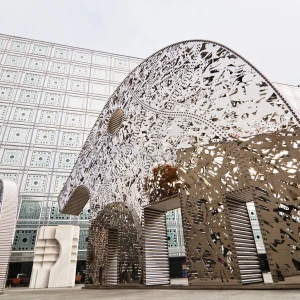
Nestled on the left bank of the Seine in the vibrant 5th arrondissement of Paris, the Institut du Monde Arabe (IMA) stands as a beacon of cultural fusion and architectural marvel. This institution is dedicated to fostering the understanding and appreciation of Arab culture, its fine arts, crafts, and sciences. Beyond its mission of cultural bridge-building, the Institut commands attention for its unique architectural design, a harmonious blend of traditional Arab and contemporary Western techniques. As a travel writer with a penchant for uncovering the globe's cultural gems, I find the IMA to be an exemplary destination for those looking ...
Shopping
19. Walk The Rue Montorgueil
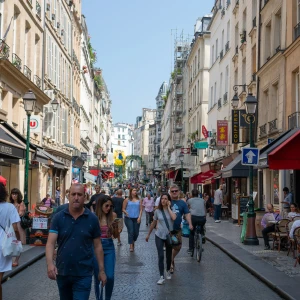
Paris is a city that rewards the walker, the flâneur who takes pleasure in the act of strolling, fully immersed in the atmosphere of the city's lively streets and alleyways. One of the city's treasures, often overlooked by the casual tourist, is the Rue Montorgueil, a bustling market street in the 2nd arrondissement. This pedestrian-friendly zone is a slice of Parisian life undisturbed by the roaring engines of cars. On this vibrant street, the spirit of old Paris seems to thrive, making a walk here not just a journey through a bustling marketplace but a step back in time.
Rue ...
Cuisine and Dining
20. Enjoy The Parisian Cafés
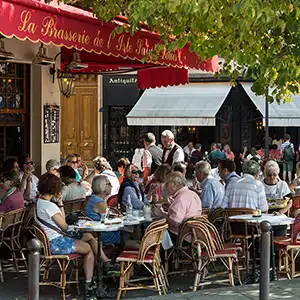
Paris is a city world-renowned for its beautifully intricate architecture, its rich historical tapestry, and of course, its culinary delights. Among all the alluring charms that it offers, there's a quintessential Parisian experience that is both uncomplicated and unmatched – an afternoon spent in one of the city's thousands of cafés. Seated comfortably at a wrought iron table, blissfully watching the world go by with a coffee cup in hand, it's an experience that embodies life in Paris.
Parisian cafés are more than coffee-serving establishments – they are cultural institutions. These are the places where the intellectual and artistic ...
Parks and Nature
21. Discover Montmartre
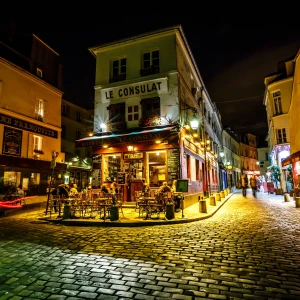
The intriguing hilltop district of Montmartre in Paris, with its bohemian past and creative atmosphere, is a location well worth the effort of exploration. Cobblestone streets twist and turn, leading to charming local bistros, beguiling boutiques, and unparalleled vistas of the city below. This district, once home to legends such as Pablo Picasso and Vincent van Gogh, still holds an ambience of artsy authenticity that's rare in modern times.
Notoriously known as the hub of the well-known Belle Époque era, Montmartre is marked by its iconic windmills, such as the Moulin Rouge – the birthplace of the famous French Cancan ...
22. Relax In Luxembourg Gardens
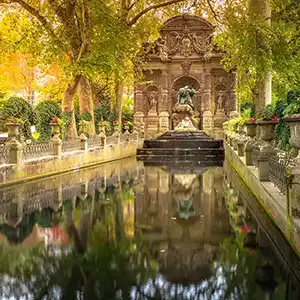
Imagine a day where serenity could dance with urban life under the European sun, where an oasis of calm bubbles amid the bustling life of a cosmopolitan city. The Jardin du Luxembourg, or Luxembourg Gardens, in Paris, presents such a world, exuding an inimitable juxtaposition of French grandeur and sentimentality.
The Luxembourg Gardens serve as the backyard of the French Senate. Modeled after the Boboli Gardens in Florence, it encapsulates an Italian essence while blending seamlessly with the iconic French elegance. Stretching over 23 hectares, the garden proliferates with lush, meticulously manicured stretches of trees and flowers, supplemented by an ...
23. Discover The Catacombs Of Paris

Descend beneath the bustling streets of metropolitan Paris and discover a world frozen in time, a place where the living greet the deceased line by line—the Catacombs of Paris. This renowned ossuary, perched deep beneath the City of Light, presents visitors with an uncommonly vivid history lesson and a rather chilling journey into the city's past.
Crisscrossing the 20th arrondissement, this subterranean network began as limestone quarries in Gallo-Roman times. However, it wasn't until the late 18th century that the Catacombs were born out of necessity. Overflowing and unsanitary cemeteries forced city officials to take the drastic step of moving ...
24. Walk The Tuileries Garden
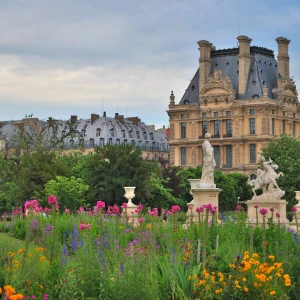
As you step through the elegant archway marking the entrance of the Tuileries Garden, you embark on a mesmerizing journey through France’s imperial past, dotted with statues, fountains, and meticulously arranged flora. This historic garden, stretching between the Louvre Museum and Place de la Concorde in the heart of Paris, is more than just a green space; it's a living, breathing museum of French history and horticulture.
The Tuileries Garden, commissioned by Queen Catherine de Medici in 1564 and later redesigned by the famed landscape architect André Le Nôtre in 1664, stands as a testament to the evolving tastes and ...
Historical Sites
25. Visit The Panthéon
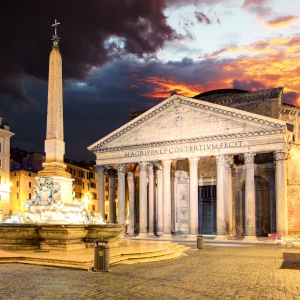
One of Paris's crowning architectural feats is without a doubt, the Panthéon. Originally conceived as a church to honor Saint Genevieve, today it serves as a mausoleum, housing the remains of distinguished French citizens whose lives were exemplary in their service to the country. As a central icon within the illustrious Latin Quarter, the Panthéon keeps watch over a world-renowned intellectual hub, punctuating the city's skyline with its glorious neoclassical façade.
Beneath its grand dome, the Panthéon is a treasure trove of French history and culture, a quiet and solemn retreat from the bustling city outside its doors. Its ...
26. Explore Père Lachaise Cemetery
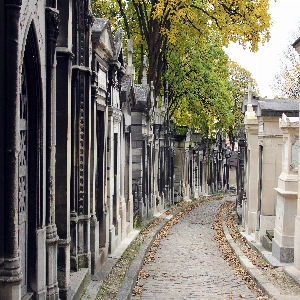
In the heart of the vibrant city of Paris lays an unexpected oasis of silence and serenity, that's unexpectedly full of life — Père Lachaise Cemetery. Opened in 1804, it is not only the largest cemetery in the city but also the most visited in the world, attracting hundreds of thousands of visitors annually, drawn by its unique mix of history, art and tranquillity.
As you meander through the labyrinthine paths lined with towering trees, the first thing you'll notice is the extravagant mausoleums and sculpted graves that hint at its reputation as the final resting place of the rich ...
Waterfront Activities
27. Enjoy A Seine River Cruise

Stepping onto a cruise ship that embarks on a scenic journey along the Seine River is like opening a beautiful book about French history. It is an opportunity steeped in fascinating culture, breathtaking scenery, and a grand narrative that unfolds around every twist and turn of the river.
If Monet's canvases come alive in your imagination and Van Gogh's renderings stir deep emotions within you, a Seine River Cruise would indeed be the perfect sojourn. This journey lets you swiftly glide through time, from the Middle Ages to the contemporary era, all against the backdrop of the picturesque French countryside.
...28. Walk The Canal Saint-Martin
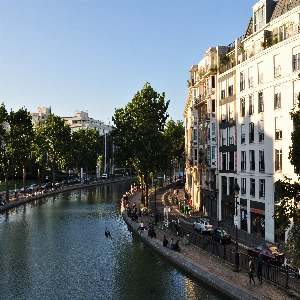
Wandering the vibrant, bohemian pathways of Canal Saint-Martin is akin to stepping into a distinctly Parisian tableau, where the fusion of historical charm and modern vibrancy creates an unforgettable ambience. This picturesque canal, stretching over 4.5 kilometers, has captured the hearts of both locals and travelers with its iron footbridges, enchanting locks, and tree-lined quays. Constructed under the orders of Napoleon Bonaparte in the early 19th century to supply Paris with fresh water, it has since morphed into a cultural and social nexus, teeming with an eclectic mix of boutiques, cafes, and artworks.
The experience of walking along Canal Saint-Martin ...
Entertainment and Culture
29. Enjoy The Paris Fashion Week

Paris, the city of lights, love, and timeless elegance, becomes even more enchanting during Fashion Week. This globally revered event is not just a showcase for haute couture and ready-to-wear collections; it's an unforgettable experience that transcends the runway. For travelers enchanted by the world of fashion, attending Paris Fashion Week paves the way to immerse themselves in the heart of the industry’s creativity and glamour. But it's not just about the fashion—it's about experiencing Paris at its most vibrant.
Planning your visit around Fashion Week requires some strategy. The event typically unfolds in late September for the Spring/Summer collections ...
30. Enjoy The Bastille Day Celebrations
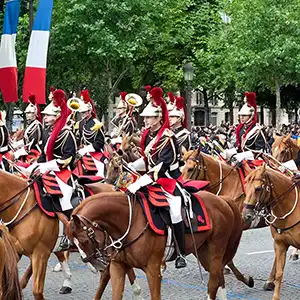
Bastille Day, or La Fête Nationale, is a French holiday that commemorates the storming of the Bastille prison on July 14, 1789, an event that marked the beginning of the French Revolution. Celebrated with great fervor across France, it’s a day that encapsulates the spirit of freedom, equality, and brotherhood. For travelers, experiencing Bastille Day in France is a unique opportunity to immerse themselves in the country's rich history, vibrant culture, and festive spirit.
The epicenter of Bastille Day celebrations is undoubtedly in Paris. The day begins with the grand military parade on the Champs-Élysées, the first of its kind ...
Architecture and Design
31. Shop At Le Marais
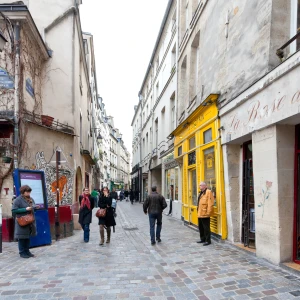
The heart of the eclectic city of Paris beats strongly in the vibrant and fashionable district of Le Marais. This historical gem, known for its captivating past, is today a treasure trove for shopping enthusiasts. Fascinating at every turn, nothing quite compares to the unique allure of strolling through the bustling, narrow cobbled streets of Le Marais, with the anticipation of discovering chic boutiques, exclusive galleries, and vintage shops.
Shopping in Le Marais is an immersive experience, a union of the traditional and the avant-garde. You will traverse through time as you meander amidst the seventeenth-century architecture, while being delighted ...
32. Visit The Place Vendôme
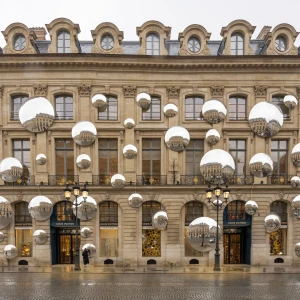
The Place Vendôme, nestled in the heart of Paris, stands as a beacon of luxury, history, and architectural splendor. This prestigious square, with its octagonal layout, is not just a symbol of Parisian elegance but also a testament to the city's rich past and vibrant present. Visiting Place Vendôme offers an unparalleled glimpse into the opulence and grandeur that characterizes the French capital.
Originally commissioned by King Louis XIV, and designed by the eminent architect Jules Hardouin-Mansart in the late 17th century, Place Vendôme has evolved through the centuries. It is the epitome of Parisian neoclassical architecture. At its center ...
Food and Beverage Tasting
33. Take A Cooking Class

There is no better way to immerse yourself into a culture than through its cuisine. Undoubtedly, one of the most delightful and insightful ways of doing this is by taking a cooking class while traveling. From the bustling markets of Bangkok to the rustic kitchens of Tuscany, cooking classes offer a delectable and enriching journey into a region’s culinary traditions and techniques.
In every corner of the world, you'll discover hidden cooking schools that eagerly await to share their culinary secrets. These classes typically commence with a trip to the local market, where you'll be introduced to fresh, indigenous ingredients. ...
34. Go Wine Tasting

Lauded as one of life's most exquisite experiences, wine tasting is truly a luxury that caters to both the senses and the soul. Immersing oneself in this practice is much more than just sipping on fabulous wines; it is a journey that engages one's senses, cultivates appreciation for the intricate art of winemaking, and opens fascinating doors to rich tradition and culture.
As you embark on this journey, every vineyard unfolds a unique story. Each grape variety mirrors the essence of its land, the weather of its seasons, offering an unexpected but delightful array of aromas, flavors, and aftertastes. This ...
Family-Friendly Attractions
35. Enjoy The Parc Asterix
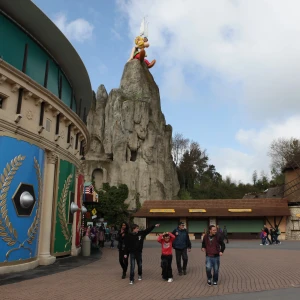
Parc Astérix, nestled just a stone's throw away from Paris, France, stands as a beacon of fun, spirited adventure, and indelible memories for visitors of all ages. This theme park, inspired by the famous comic book series "Asterix," which tells the story of gallant Gaulish warriors battling the Roman Empire, offers a unique blend of historical intrigue and modern-day amusement. Its enchanting attractions and immersive experiences have solidified its reputation as a must-visit destination for both locals and international travelers alike.
Upon stepping into Parc Astérix, one is immediately transported into the vibrant world of Asterix, Obelix, and their valiant ...
Literary and Cultural Heritage
36. Explore The Latin Quarter
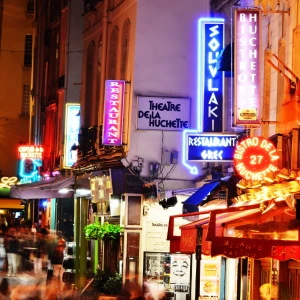
As the heart of Paris's bohemian past pulses vigorously amidst an air of academia, the Latin Quarter invites travelers to delve into the city's intellectual and artistic hub. Named for the Latin-speaking scholars of the Middle Ages who once roamed its avenues, the Quartier Latin remains soaked in a legacy of enlightenment, rebellion, and creative freedom.
From the scholarly alleys of Sorbonne Université to the hustle and bustle found near Boulevard Saint-Michel, every nook and cranny of the Latin Quarter exudes an undeniable flair. Once home to the likes of Hemingway, Verlaine, and Descartes, the area continues to inspire, blending ...
37. Explore The Shakespeare And Company Bookstore

Paris is not just a city known for its iconic Eiffel Tower, savory croissants, and rich history, but it also holds an unassuming treasure on its Left Bank—a literary sanctuary known as Shakespeare and Company bookstore. This quaint yet bustling store has long been a haven for book lovers, writers, and travelers alike, offering not just books but an experience deeply entrenched in literary history and the bohemian culture of Paris. For those seeking more than just a tourist spot, a visit to Shakespeare and Company is a pilgrimage to the heart of literary Paris.
Founded in 1951 by the ...
38. Explore The Maison De Victor Hugo
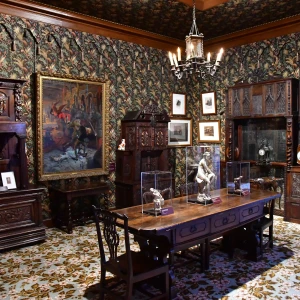
Nestled within the labyrinthine streets of Paris, a piece of literary history beckons the eager traveler. The Maison de Victor Hugo, situated in the heart of the Marais district, is a sanctuary dedicated to one of France’s most illustrious writers. This remarkable museum, settled on the picturesque Place des Vosges, is housed in the very apartment where Hugo lived for 16 years. From the moment one steps through its doors, the museum offers a vivid journey back to the 19th century, allowing visitors to immerse themselves in the world of the author who gave us timeless masterpieces such as "Les ...
Music and Performances
39. Watch A Show At Moulin Rouge

Paris is often synonymous with art, romance, and gastronomy, but what is often overlooked amongst these beauteous attractions is the city’s heart-stealing world of entertainment. A particular spectacle that continues to draw global travelers like moths to flame is the spectacle of watching a show at the illustrious Moulin Rouge.
Moulin Rouge, meaning 'Red Mill' in French, is a cabaret house nestled majestically in the quaint region of Montmartre. Built in 1889 by Charles Zidler and Joseph Oller, the establishment has since evolved into an epitome of quintessential Parisian nightlife. Known worldwide, not just for its iconic red windmill on ...
40. Discover The Opéra Bastille
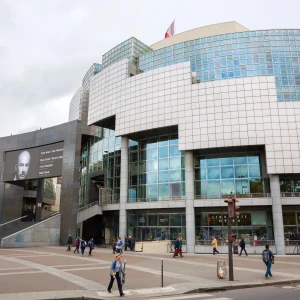
Nestled in the bustling heart of Paris, Opéra Bastille stands as a modern marvel of architectural ingenuity and cultural prominence. Opening its doors in 1989, this contemporary opera house was birthed from the visionary mind of Carlos Ott, who won the international design competition that sought a fresh icon for Paris’s music and arts scene. Unlike its ornate counterpart, Palais Garnier, Opéra Bastille was conceptualized with user-friendliness and accessibility in mind, making it a beacon of democratic values in the realm of high culture.
The edifice itself is a testament to modern design, incorporating vast sheets of glass that allow ...
Religious and Spiritual Sites
41. Tour Notre-Dame Cathedral

The Notre-Dame Cathedral or simply Notre-Dame, is one of the most enduring symbols of Paris. Situated on the Île de la Cité, it stands as a magnificent masterpiece of French Gothic architecture. Its dramatic towers, spire, stained glasses, and statuary are sure to leave any visitor spellbound.
The moment you lay your eyes on this French Gothic marvel, you are instantly drawn to its intricate façade that tells a compelling story of history and religion. From its remarkable rose windows to the majestic arches, every corner of Notre-Dame echoes an aesthetic elegance that captures the essence of the bygone medieval ...
42. Admire The Sainte-Chapelle
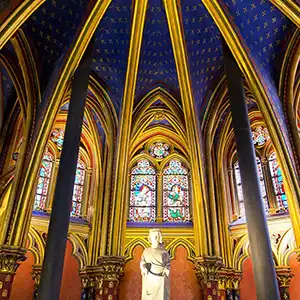
Situated in the heart of the Île de la Cité in Paris, the Sainte-Chapelle is an iconic testament to the grandeur of medieval French architecture. Constructed in the mid 13th century by Saint Louis, this stunning chapel is renowned for its enchanting beauty and its captivating collection of vibrant stained glass windows.
As you step through the entrance, your eyes will be drawn to the kaleidoscope of colors that floods the intimate space. The majestic 15 meters high stained glass windows depict an arresting blend of religious scenes and royal imagery - a tribute to the Crown, the chapel's patron. ...
